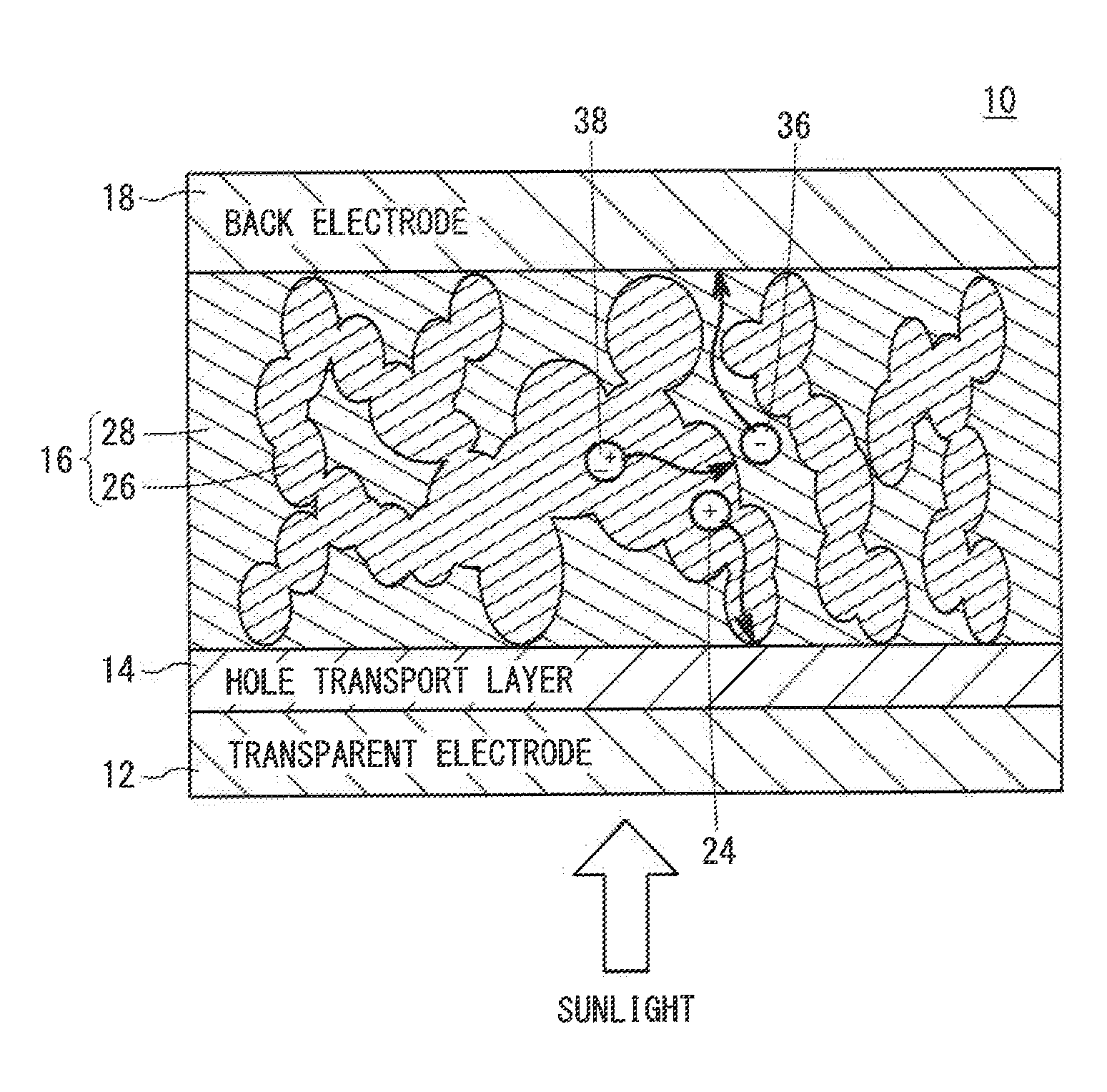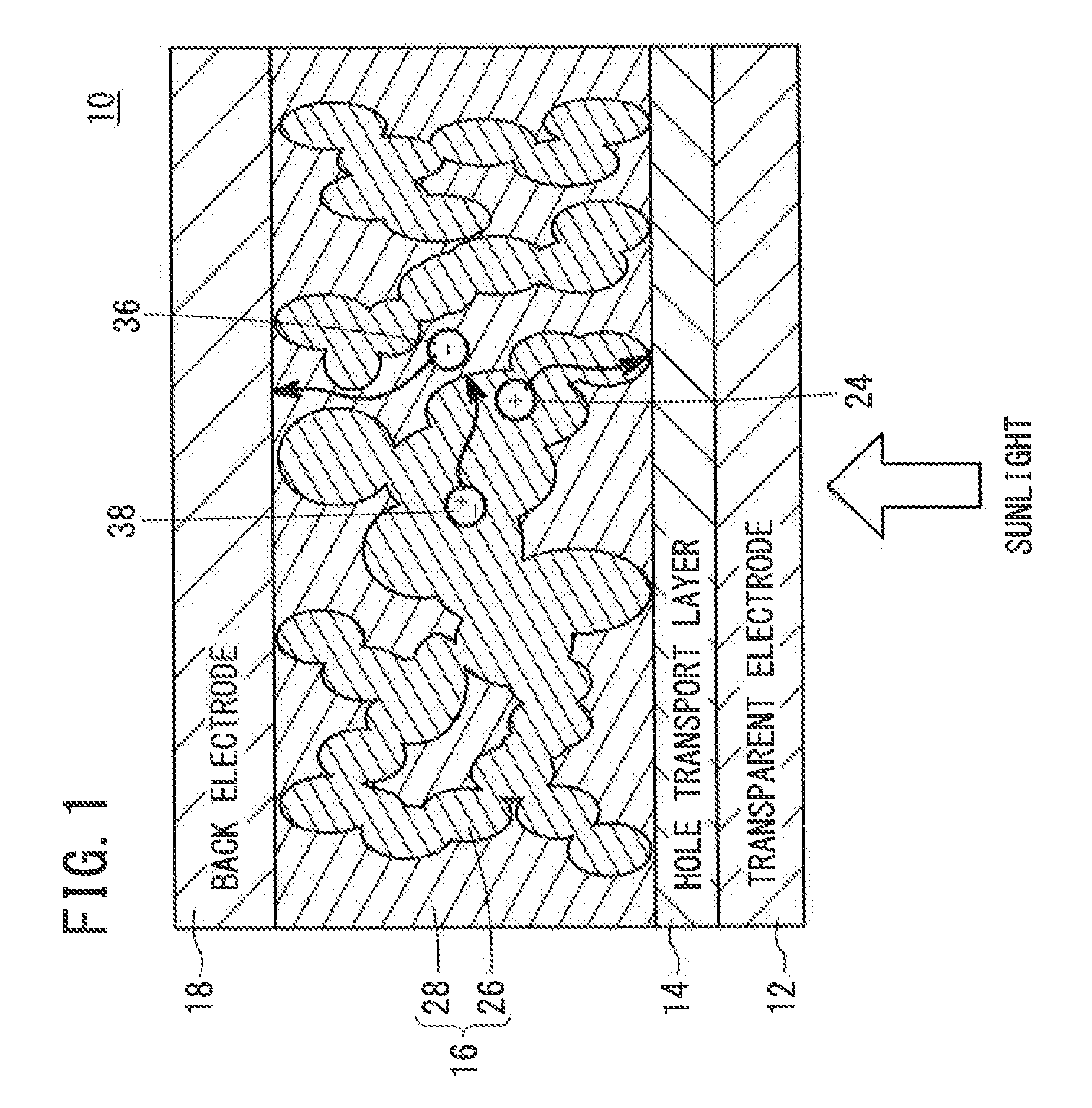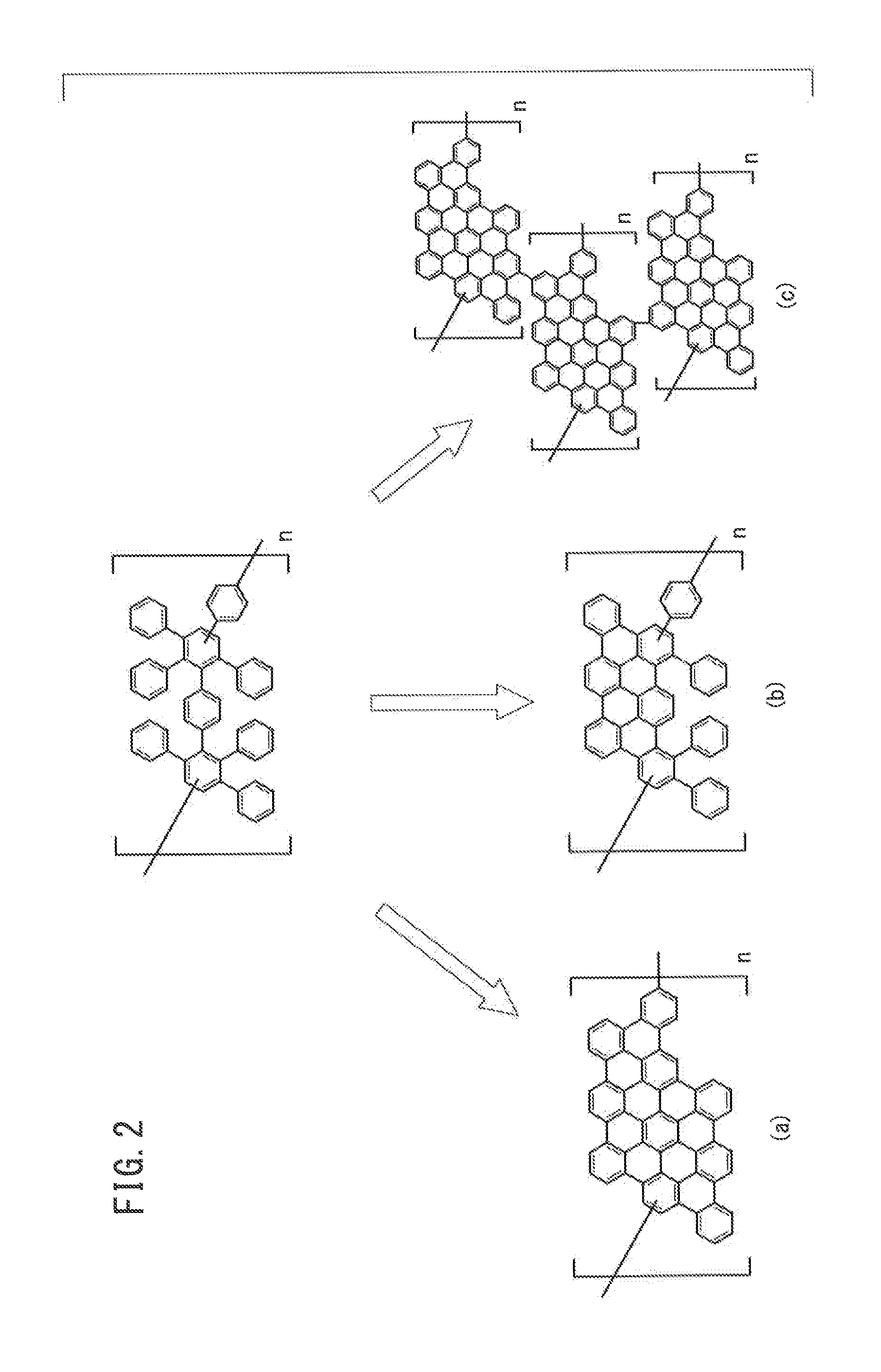Photoelectric Conversion Material, Method For Producing The Same, And Organic Photovoltaic Cell Containing The Same
a photoelectric conversion and organic technology, applied in the direction of non-metal conductors, sustainable manufacturing/processing, final product manufacturing, etc., can solve the problems of large number of processes, inability to produce donors, and poor soluble organic low-molecular compounds in organic solvents, etc., to achieve excellent photoelectric power conversion efficiency, high sunlight utilization efficiency, and high absorbance coefficient
- Summary
- Abstract
- Description
- Claims
- Application Information
AI Technical Summary
Benefits of technology
Problems solved by technology
Method used
Image
Examples
example 1
[0130]A BHJ solar cell was produced using a nanographene polymer as a donor and a PCBM as an acceptor in a photoelectric conversion layer.
[0131]Specifically, first, a glass substrate having a patterned ITO electrode was washed and fixed to a spin coater. Then, an aqueous PEDOT:PSS dispersion liquid was dropped onto the substrate, and the substrate was rotated at 4,000 rpm. As a result, a hole transport layer having a thickness of about 40 nm was formed.
[0132]Meanwhile, 4 mg of a nanographene polymer having the structural unit 30 shown in FIG. 3 and 16 mg of PCBM were dissolved in 1.0 ml of orthodichlorobenzene to prepare a mixture solution.
[0133]The substrate was fixed to the spin coater placed in a glove box, the mixture solution was dropped onto the hole transport layer, and the substrate was rotated at 1,000 rpm. As a result, a photoelectric conversion layer having a thickness of about 40 nm was formed.
[0134]The substrate having the hole transport layer and the photoelectric conv...
PUM
| Property | Measurement | Unit |
|---|---|---|
| long-wavelength absorption edge | aaaaa | aaaaa |
| long-wavelength absorption edge | aaaaa | aaaaa |
| LUMO energy level | aaaaa | aaaaa |
Abstract
Description
Claims
Application Information
 Login to View More
Login to View More - R&D
- Intellectual Property
- Life Sciences
- Materials
- Tech Scout
- Unparalleled Data Quality
- Higher Quality Content
- 60% Fewer Hallucinations
Browse by: Latest US Patents, China's latest patents, Technical Efficacy Thesaurus, Application Domain, Technology Topic, Popular Technical Reports.
© 2025 PatSnap. All rights reserved.Legal|Privacy policy|Modern Slavery Act Transparency Statement|Sitemap|About US| Contact US: help@patsnap.com



